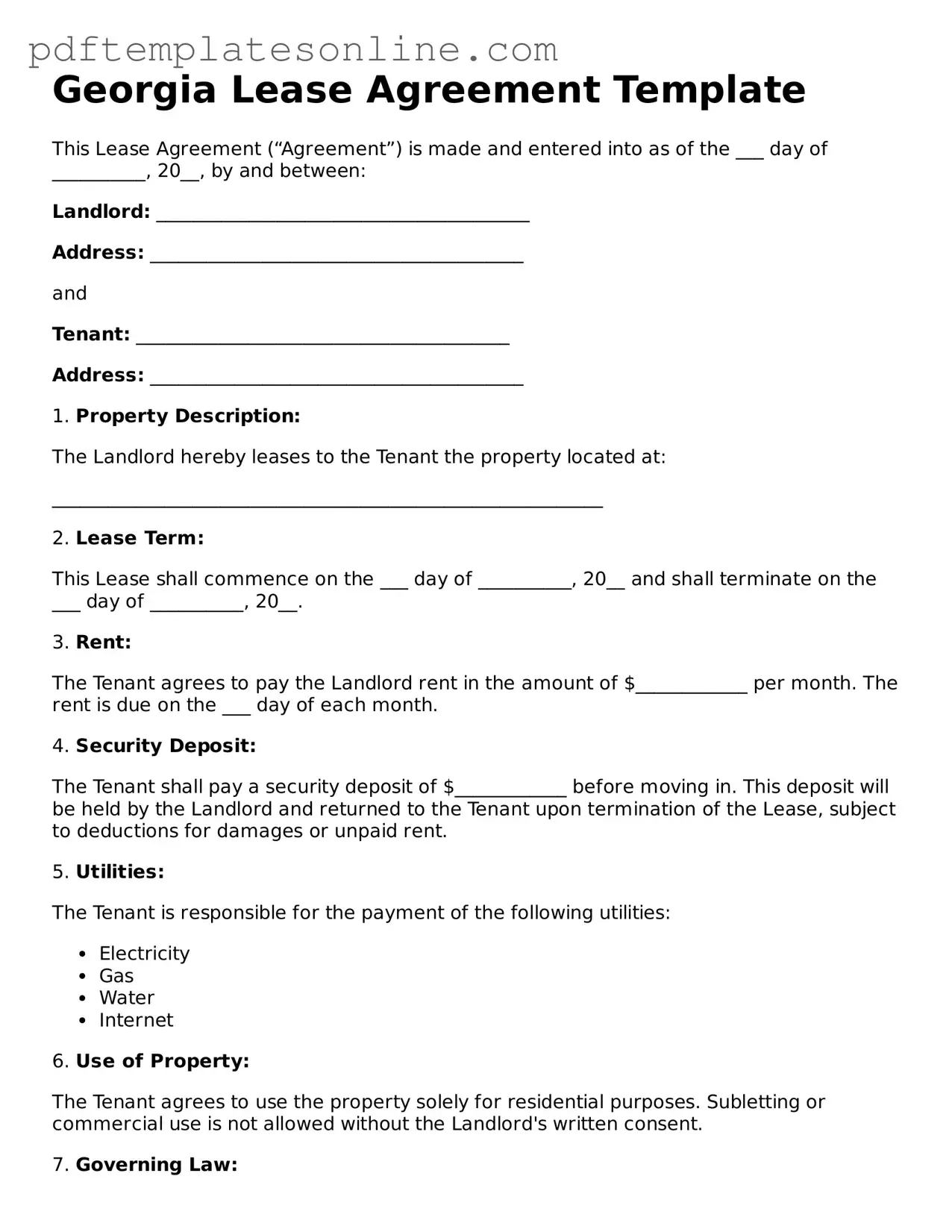Filling out a lease agreement can be a straightforward process, but there are common mistakes that many people make when completing the Georgia Lease Agreement form. Understanding these pitfalls can help ensure that the lease is filled out correctly, protecting both landlords and tenants.
One common mistake is failing to include all necessary details. Each party's full name, contact information, and the property address must be clearly stated. Omitting this information can lead to confusion or disputes later on. Ensuring that all parties are accurately identified helps to avoid any potential misunderstandings.
Another frequent error involves not specifying the lease term. It's essential to indicate whether the lease is for a fixed term, such as one year, or if it is a month-to-month agreement. Without this clarity, both parties may have different expectations regarding the duration of the tenancy, which can lead to conflict.
People often overlook the importance of detailing the rent payment terms. The lease should clearly state the amount of rent due, the due date, and acceptable payment methods. If these details are vague or missing, it can result in late payments or disputes over payment methods.
Additionally, many individuals forget to address security deposit information. The lease should specify the amount of the security deposit, the conditions under which it may be withheld, and the timeline for its return after the lease ends. This transparency is crucial for both landlords and tenants to understand their rights and responsibilities regarding the deposit.
Another mistake is neglecting to include maintenance responsibilities. It's important to outline who is responsible for repairs and maintenance of the property. This can prevent misunderstandings about who should handle issues like plumbing problems or lawn care, ensuring that both parties know their obligations.
Lastly, many people fail to read the lease thoroughly before signing. Taking the time to review the entire document can help identify any unclear terms or conditions that need clarification. A well-understood lease agreement can lead to a smoother rental experience for everyone involved.
